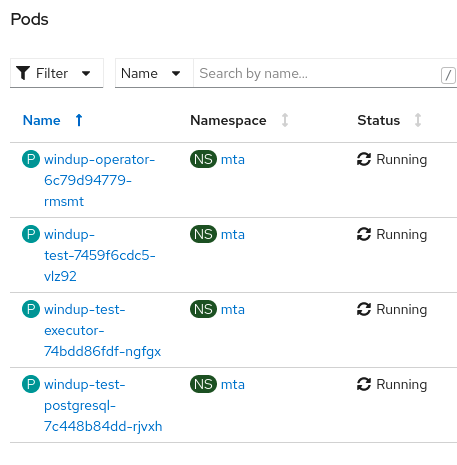Red Hat's migration toolkit for applications (previously known as Red Hat Application Migration Toolkit) has reached version 5.1.0. This version includes user interface improvement, the new migration toolkit for applications Operator, and new rules to support development teams migrating from Spring Boot to Quarkus.
About migration toolkit for applications
Migration toolkit for applications originally was designed to support JBoss Enterprise Application Platform (JBoss EAP) upgrades and migrations from proprietary application servers such as Oracle WebLogic. It has evolved to support a wider variety of migration paths, including containerization. Java developers use the toolkit to assist migrations from the Oracle Java Development Kit (JDK) to OpenJDK, from Apache Camel 2 to Apache Camel 3, from Spring Boot to Spring Boot on Red Hat Runtimes, and more.
Migration toolkit for applications analyzes your code and reveals proprietary technologies and patterns that might not work for containers or Linux. It then proposes changes to make your applications portable. The latest version, migration toolkit for applications 5.1.0, includes features to ease the migration to rising technologies like Quarkus.
Note: See Migrate your Java apps to containers with migration toolkit for applications 5.0 for more about the available migration paths.
User interface improvements
Migration toolkit for applications uses the well-known, open source Patternfly framework for its user interface (UI). Patternfly has recently evolved to version 4. For this release, we didn’t just upgrade to the most recent version, however. We also took the opportunity to review the interface and improve it for a more streamlined developer experience.
With the new migration toolkit for applications UI, we've sought to make the most of Patterfly's sophisticated design language. As shown in Figure 1, the UI includes project creation and management elements and improved icons for various transformation paths.

We've also provided an easier way to implement and manage the rules used for migrations and modernizations. Managing your own custom rules, adapted to your own code styles and internal frameworks, is easier than ever. Figure 2 shows the rule-review feature in the improved migration toolkit for applications UI.

Finally, as shown in Figure 3, the UI includes a new wizard for creating migration projects. The wizard provides easy access to standard capabilities and more control for advanced ones.

The new migration toolkit for applications Operator
Deploying and maintaining applications on Red Hat OpenShift (Red Hat’s Cloud Native Computing Foundation-certified, fully open source distribution of Kubernetes) is more manageable with OpenShift Operators. We have now built a fully open source Operator to help deploy and manage migration toolkit for applications on OpenShift. Figure 4 shows the new migration toolkit for applications Operator installed on OpenShift.

The migration toolkit for applications Operator does the following:
- Deploys migration toolkit for applications objects.
- Deletes migration toolkit for applications from your OpenShift installation.
- Publishes routes.
You can access it easily and deploy it on OpenShift 4.5 and higher releases. Once it is deployed, you can make it available for any developer in their own project. We've also provided a template for deployments on previous OpenShift versions, including OpenShift 4 and OpenShift 3.11. Figure 5 shows resources deployed and managed by the migration toolkit for applications Operator.

Support for migrating from Spring Boot to Quarkus
The Red Hat Modernization and Migration Solutions team works with customers worldwide. Recently, we've seen a growing interest in Quarkus from development teams currently using Spring Boot. Development teams are interested in the speed advantages, low-memory footprint, and minimal startup times available from Quarkus. Teams adopt Quarkus for their increased productivity and to reduce code. With this release, we've worked with Red Hat's Spring Boot team to develop a set of rules to help reduce the effort and time required to modernize Java application code from Spring Boot to Quarkus.
For the migration toolkit for applications 5.1.0 release, we focused on Spring Boot APIs that are already implemented as Quarkus Spring Boot extensions. We've made it easier than ever to replace these Spring Boot dependencies with their equivalent Quarkus extensions. As part of a migration, migration toolkit for applications also reports any Spring Boot artifacts that do not currently have a Quarkus equivalent.
This release includes a total of 22 rules covering dependency injection integration, metrics, persistence, security, web, shell, and more. Every rule was developed and tested with real-world code. Figure 6 shows a sample of the rules now available to developers, architects, and other community partners planning a migration from Spring Boot to Quarkus.

Download and use migration toolkit for applications 5.1.0
Visit the download page for migration toolkit for applications to get your free installation. You can use the Getting started guide to get up and running with migration toolkit for applications 5.1.0 in minutes, whether on your laptop, in a virtual machine, or your own OpenShift environment.
Conclusion
We hope that you and other developers around the globe will enjoy the refreshed user experience in migration toolkit for applications 5.1.0. As discussed in this article, the current release includes an improved user interface, a new migration toolkit for applications Operator, and rules to support migrating from Spring Boot to Quarkus.
To make the most of migration toolkit for applications 5.1.0, see the migration toolkit for applications 5.1.0 documentation. Among other things, you can use the documentation to learn how to write your own migration rules.
Everything we do at Red Hat is open source and community-based. If you want to get involved with this project, join us in the konveyor.io project and community. The project hosts the source code for migration toolkit for applications and other modernization and migration tools, guides to best practices, and more. You can also follow us on Twitter @MTAbyRedHat to stay up to date and engage directly with the migration toolkit for applications team. We look forward to helping you take your applications to the next level!
Last updated: September 7, 2023
